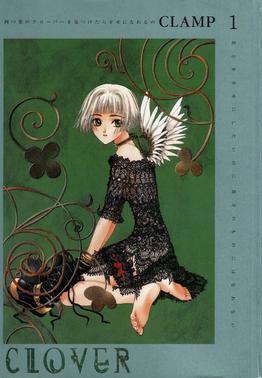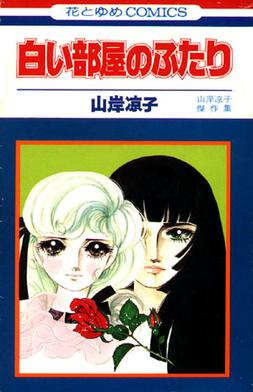
Clamp is an all-female Japanese manga artist group, consisting of leader and writer Nanase Ohkawa, and three artists whose roles shift for each series: Mokona, Tsubaki Nekoi, and Satsuki Igarashi.

Superflat is a postmodern art movement, founded by the artist Takashi Murakami, which is influenced by manga and anime. However, superflat does not have an explicit definition because Takashi Murakami does not want to limit the movement, but rather leave room for it to grow and evolve over time.

Clover is a manga series created by Clamp, a creative team made up by Satsuki Igarashi, Nanase Ohkawa, Tsubaki Nekoi, and Mokona. The manga takes place in a dystopian future, where the government is out to control the "Clovers", a race of children with special powers.

Takashi Murakami is a Japanese contemporary artist. He works in fine arts as well as commercial media and is known for blurring the line between high and low arts. His influential work draws from the aesthetic characteristics of the Japanese artistic tradition and the nature of postwar Japanese culture.

Yasumasa Morimura is a contemporary Japanese performance and appropriation artist whose work encompasses photography, film, and live performance. He is known for his reinterpretation of recognizable artworks and figures from art history, history, and mass media through his adoption of personas that transcend national, ethnic, gendered, and racial boundaries. Across his photographic and performative series, Morimura's works explore a number of interconnected themes, including: the nature of identity and its ability to undergo change, postcolonialism, authorship, and the Western view of Japan – and Asia, more broadly – as feminine.
Will Cotton is an American painter. His work primarily features landscapes composed of sweets, often inhabited by human subjects. Will Cotton lives and works in New York City.

John Berkey was an American artist known for his space and science fiction themed works. Some of Berkey's best-known work includes much of the original poster art for the Star Wars trilogy, the poster for the 1976 remake of King Kong and also the "Old Elvis Stamp".

Le Chevalier D'Eon is a Japanese anime television series produced by Production I.G based on an original story by Tow Ubukata. The anime originally aired in Japan on WOWOW from August 19, 2006, to February 2, 2007. The story has also been adapted into a manga series written by Tow Ubukata and illustrated by Kiriko Yumeji, which was first published in 2005. The title character is loosely based on the historical figure Chevalier d'Éon, who lived in the middle of 18th-century, pre-Revolutionary France under the reign of Louis XV.

tokidoki is the Japanese-inspired lifestyle brand created in 2006 by Italian artist Simone Legno and his business partners Pooneh Mohajer and Ivan Arnold. They produce apparel, footwear, accessories and other products using art, cartoon characters and the logo designed by Simone Legno.

Yumiko Igarashi is a Japanese manga artist. She is best known for illustrating the manga series Candy Candy.

Shiroi Heya no Futari is a Japanese manga one-shot written and illustrated by Ryoko Yamagishi, originally published in the February 1971 issue of the manga magazine Ribon Comic. Focusing on the romance between two students at an all-girls Catholic boarding school in France, it is considered to be the first work in the yuri genre.
Ikko Tanaka was a Japanese graphic designer. Tanaka is widely recognized for his prolific body of interdisciplinary work, which includes graphic identity and visual matter for brands and corporations including Seibu Department Stores, Mazda, Issey Miyake, Hanae Mori, and Expo 85. He is credited with developing the foundational graphic identity for lifestyle brand Muji, emphasizing the "no brand" quality of their products through unadorned, charming line drawings paired with straightforward slogans. His use of bold, polychromatic geometries and his harnessing of the dynamic visual potential of typography are undergirded by a sensitivity towards traditional Japanese aesthetics. Though keenly sensitive to historical precedents and established conventions, Tanaka nevertheless maintained a degree of playfulness in his work, manipulating color, scale, and form to reconfigure familiar iconographies into fresh and accessible visual representations.
Nelson Medina is an artist from Lima, Perú. Recognized early in his career, Medina has shown his works internationally in his magazine Revolutionart, which also promotes the work of independent artists and famous talents.
Appropriation in art is the use of pre-existing objects or images with little or no transformation applied to them. The use of appropriation has played a significant role in the history of the arts. In the visual arts, to appropriate means to properly adopt, borrow, recycle or sample aspects of human-made visual culture. Notable in this respect are the Readymades of Marcel Duchamp.

Rufus is a character in Capcom's Street Fighter series of fighting games. Designed by Daigo Ikeno for Capcom's development team, he first appeared in the arcade version of Street Fighter IV and later in related promotions and media for the title.
Revolutionart is an international magazine about graphic design, visual arts, and lifestyle. Some of their contributors were Floria Sigismondi, Mark Miremont, Andrzej Dragan, Matt Mignanelli, Skew Siskin, Jeremyville, Mandy Lynn Oliviero Toscani, Simone Legno, Tino Soriano, Lemmy Kilmister, Paul Matthaeus and Justin Lassen.
Count Renato Zavagli Ricciardelli della Caminate, professionally known as René Gruau was a fashion illustrator whose exaggerated portrayal of fashion design through painting has had a lasting effect on the fashion industry. Because of Gruau's inherent skills and creativity, he contributed to a change in the entire fashion industry through the new pictures that represented the already popular designs created by designers in the industry. The benefits, including economic stimulation and enhancement of advertising are still present in the industry today via a new way of fashion illustration, fashion photography. Gruau became one of the best known and favorite artists of the haute couture world during the 1940s and 50s working with Femina, Marie Claire, L'Officiel, L'Album Du Figaro and an assortment of "high-style" magazines. Gruau's artwork is recognized and commended internationally in some of Paris and Italy's most prestigious art museums including the Louvre in Paris and the Blank in Italy. In addition to his international fame and recognition, "Gruau's artwork is known for its timeless and enduring style".


My Roommate Is a Cat is a Japanese manga series written by Minatsuki and illustrated by Asu Futatsuya, serialized online via Flex Comix's Comic Polaris website since June 2015. It has been collected in eight tankōbon volumes. An anime television series adaptation by Zero-G aired from January to March 2019.













